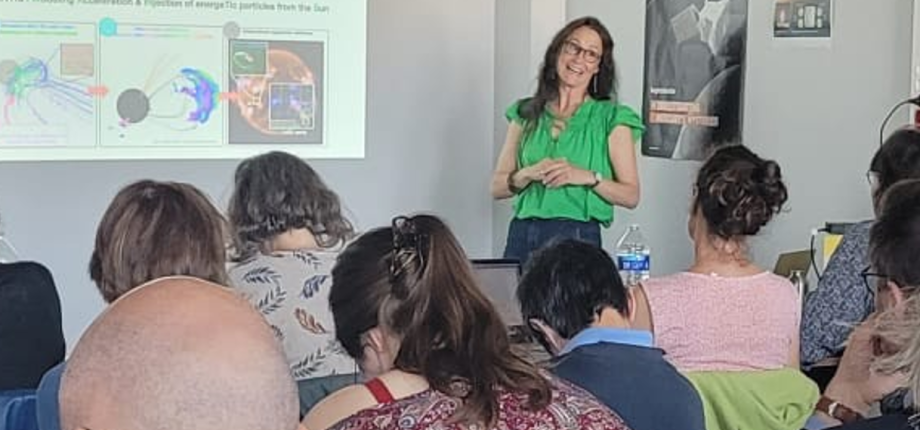Sophie Masson defended her Habilitation à Diriger des Recherches (HDR) entitled "The dynamics of the solar corona and solar energetic particle events."

Sophie MASSON’s research field is solar physics, with a particular focus on eruptive and impulsive phenomena. To address these topics, she uses two distinct yet complementary approaches: modeling and observational diagnostics. Her work is part of the broader context of space weather research and aims to enhance our understanding of solar phenomena, which are key drivers of Sun–Earth interactions.
She develops and analyzes three-dimensional MHD numerical simulations to propose new models of solar eruptive and impulsive events. These models serve multiple purposes. One major objective, aligned with the Solar Orbiter and Parker Solar Probe missions, is to characterize the origin and source of the slow solar wind. In this regard, she investigates the dynamic coupling between the closed magnetic field of the solar corona and the open field of the heliosphere. She also builds models to study solar eruptions, which are major sources of disturbances in the Earth’s space environment. Her research focuses both on the triggering mechanisms of these events and on their inherent dynamics, including multiple episodes of magnetic reconnection, the development of small-scale structures, and their coupling with the interplanetary medium. These models are also used to explore how solar energetic particles can access the heliosphere.
The models she develops are designed to explain specific observations and are therefore constrained beforehand and/or validated afterward by data. Through collaborations with several international teams, she applies her 3D MHD models of impulsive coronal dynamics and her expertise in 3D magnetic reconnection to interpret solar eruption observations. This work aims to identify the physical mechanisms responsible for observational signatures, using both remote sensing measurements (electromagnetic signals in the corona) and in situ data from the heliosphere.





